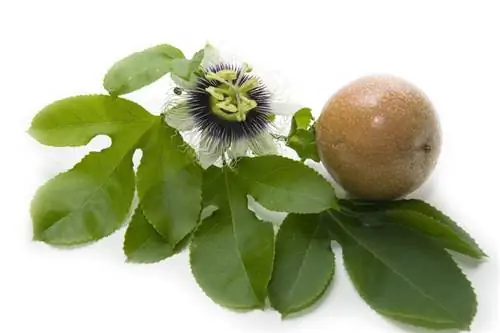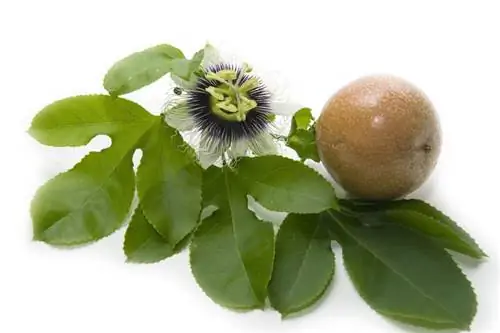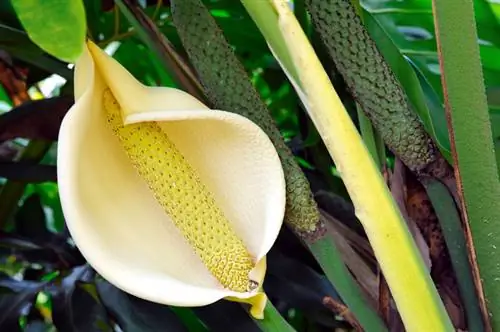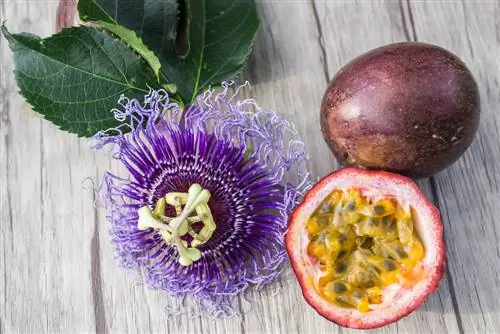- Author admin [email protected].
- Public 2023-12-16 16:46.
- Last modified 2025-06-01 06:02.
There are small, perhaps still green fruits on your passion flower? Congratulations! You can count yourself lucky, because in our latitudes the passiflora only produces fruit if the conditions are good. But be careful: the berries, which are usually orange or brown-purple when ripe, are only edible in a few species from the large passionflower family.

Which passion flowers are edible?
Of the over 500 species of passionflower, only about 50 to 60 are edible, including passion fruit (P.edulis), passion fruit (P. edulis forma flavicarpa), grenadilla (P. ligularis) and flesh-colored passionflower (P. incarnata). Most other fruits are inedible or in some cases poisonous, such as the genus Decaloba.
These passiflora produce edible fruits
The following table shows the names of the most important edible Passiflora species, although the list is of course not complete. Of the over 500 different members of this very extensive plant family, around 50 to 60 produce edible fruits. Some species are little known to us and only very rarely develop ripe fruit under the local conditions, but are specifically grown in their home countries as fruit suppliers. Others, such as passion fruit, can also be found in our supermarkets.
| Passiflora species | Common name | Origin | Bloom | Fruit |
|---|---|---|---|---|
| P. edulis forma edulis | Passionfruit | Tropics | white-purple | dark brown-red, wrinkled shell |
| P. edulis forma flavicarpa | Passionfruit | Tropics | white-purple | greenish to yellow, larger than passion fruit |
| P. ligularis | Grenadilla or Granadilla | Peru | white-purple | deep yellow |
| P. quadrangularis | Barbadine, King's Grenadilla | West Indies | Petals dark red, halo white-purple | very large fruits |
| P. alata | - | Peru and Brazil | red | yellow to light orange |
| P. incarnata | Flesh Colored Passionflower | North America | white, violet or pale pink | greenish to yellow, about the size of a chicken egg |
You shouldn't eat these passion fruits
The fruits of most Passiflora are not poisonous, just inedible or not very tasty. However, a few species are actually unsuitable for consumption, and in many cases unripe fruits are even poisonous. All passiflora of the genus Decaloba and their hybrids (crosses) are absolutely not edible (quite the opposite, because they are even poisonous).
Using fruits to obtain seeds
However, fruit formation is not that easy. You need to know exactly which species your passiflora belongs to and how it is pollinated - fruits with seeds only develop if the flower was pollinated at the right time. In nature, some passion flowers are fertilized by bats, others by hummingbirds or by bees or butterflies. In addition, some species can be cross-pollinated, some only by their own species and a few are self-pollinating. To produce fruit at home, you usually have to grab a brush and do the pollination by hand. The seeds of ripe fruits can be used for propagation.
Tips & Tricks
In the case of Passiflora, you can quickly become a breeder yourself and create your own varieties, as many species can be crossed with each other.






